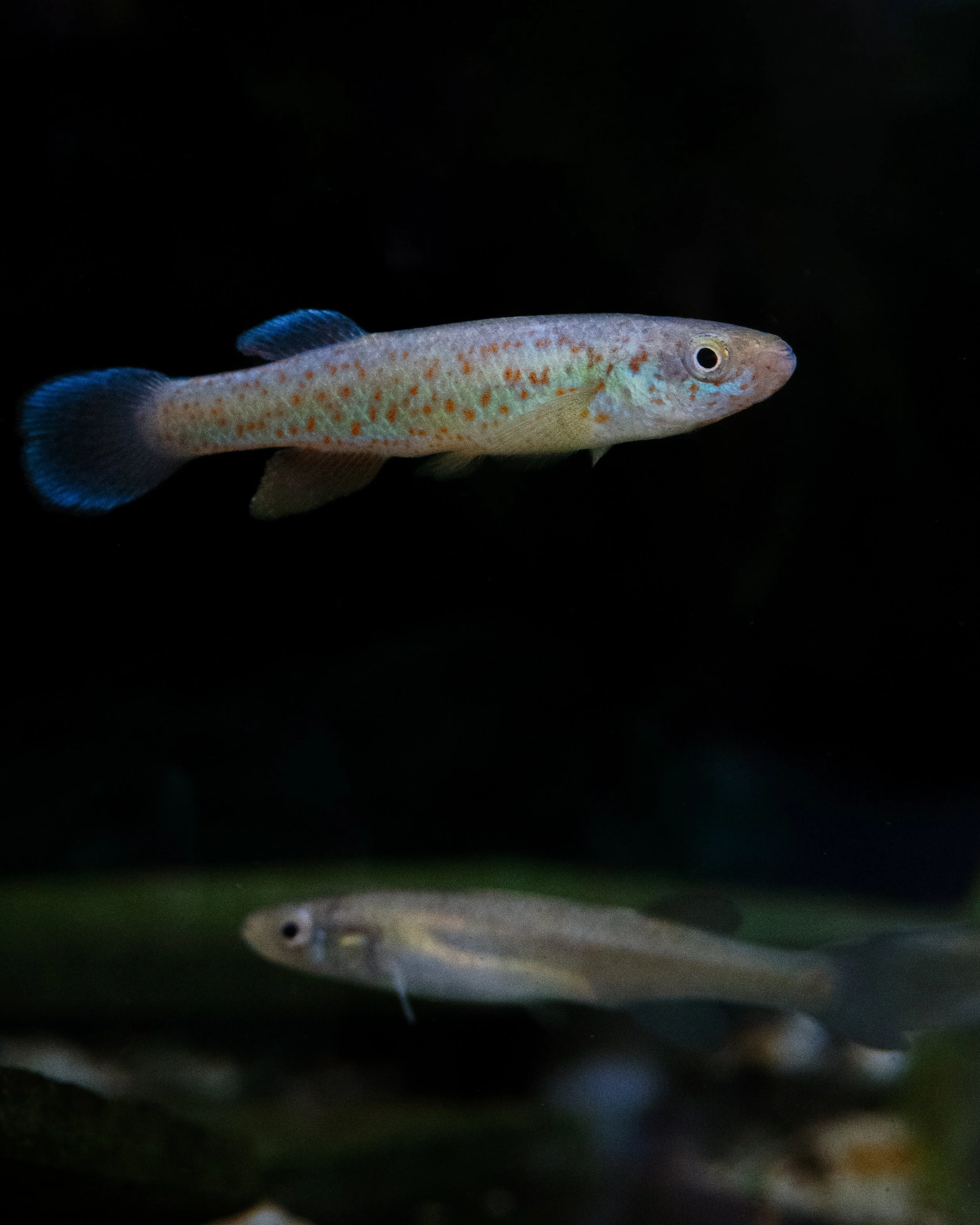Photo by Joel Sartore.
Barrens Topminnow | Fundulus julisia
Status: IUCN: Endangered; USFWS: Endangered (2019)
Threats: Agricultural practices, habitat destruction, and invasive species (mosquitofish) (What do these terms mean?)
Native Range: Upper Caney Fork (Cumberland River drainage) and Upper Duck River and Elk River (Tennessee River drainage) systems, cen. TN
Spawning Habitat Preferences: Late spring-early summer spawners in clear, spring-fed streams with low flow; spawn in vegetation and woody debris
CFI Status: Propagated at CFI from 1995-Present for assurance colonies of three genetically distinct populations held by CFI and other hatcheries. (What do these terms mean?)
In Partnership With: Tennessee Aquarium Conservation Institute; Tennessee Wildlife Resources Agency; USFWS (Asheville, NC and Cookeville, TN); USFWS Dale Hollow National Fish Hatchery and Wolf Creek National Fish Hatchery
Relevant Literature: Life History and Ecology of the Barrens Topminnow, Fundulus julisia Williams and Etnier (Pisces, Fundulidae) - Patrick L. Rakes
Fun Facts: Our work with the Barrens Topminnow has given us deep insights into their survival strategies and unique characteristics. These fish are vegetation spawners, which means they lay their eggs in yarn mop heads, and we carefully remove these eggs with tweezers. Interestingly, the eggs are incredibly tough—they can fall to the floor and still hatch into healthy larvae. In one of our experiments, we placed some of the eggs in a wet paper towel to test their resilience, and they hatched successfully even after days without water.
This toughness might be linked to their habitat in Central Tennessee, where they live in shallow pools. We use binoculars to observe them because they are easier to spot from above due to a distinct reflective "exclamation mark" pattern on their dorsal stripe. These fish are skittish, quickly hiding in vegetation when approached. Pollution from agricultural runoff and invasive species like Mosquitofish are major threats to their habitats. The Barrens Topminnow coexisted with Mosquitofish for over 20 years, but cattle farming significantly reduced their numbers. Groundwater withdrawal during droughts also poses a risk, leading our team to perform "rescue missions" to save them from drying pools.
We've found that different populations of Barrens Topminnow prefer various substrates for spawning, ranging from pebbles to slates. However, they all need plenty of plant life to support their breeding. This adaptability in spawning environments is one of the reasons they've been able to persist despite the challenges they face.
More info
is in our
Instagram
Reels!
Part 1
Part 2





